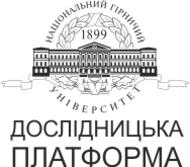№78-13
Substantiation of components of ecological groundwater recharge system for metallurgical regions of southern Ukraine
О. Nazarenko1, А. Berezovska1, Ye. Buyakova1, O. Ischenko1, Y. Sherstiuk2
1 National University Zaporizhzhia Polytechnic, Zaporizhzhia, Ukraine
2 Dnipro University of Technology, Dnipro, Ukraine
Coll.res.pap.nat.min.univ. 2024, 78:153–160
Full text (PDF)
https://doi.org/10.33271/crpnmu/78.153
ABSTRACT
Purpose. To substantiate the components of the ecological system of river basins based on the analysis of the characteristics of groundwater pollution within the metallurgical regions of southern Ukraine.
Methods. Analysis of literary sources, statistical processing of data from hydrological and hydrogeological studies, development of experimental field and laboratory studies of cumulative soil infiltration and adsorption capacity of materials.
Findings. General ideas concerning the components of the ecological system of groundwater recharge in conditions of the metallurgical regions of southern Ukraine have been formed. Data on the use of research methods of natural materials for productive infiltration of surface water and wastewater and the possibility of forming water reserves for the river basin recharge have been obtained. A methodology for studying and considering the interrelations between various toxicants of the water system has been proposed, which allows for more effective solutions to the issues of pollution localization and basin recharge.
The originality. Themethodology of studying and optimizing processes that affect the groundwater condition in regions with a high concentration of metallurgical enterprises has been improved, which comprehensively includes the identification of specific pollutants, the development of new methods of water purification, the modeling and forecasting of wastewater infiltration. A new integrated system for recharging the water basin of the region is proposed, which considers the possibility of using wastewater after its local treatment as a reserve for surface water recharging.
Practical implementation. The results of the study will be important in the formation of soil absorption maps of the southern regions of Ukraine, considering the characteristics of metallurgical regions where water is intensively involved into industrial processes, for determining the potential capacity of groundwater reserves formation, as well as for further research into water infiltration under the influence of climate change and man-made factors.
Keywords: water resources, river basin recharge, groundwater, sewage infiltration.
References
1. Chyzhykova, O. B., ta in. (2018). Vplyv metalurhiinykh pidpryiemstv na stan pidzemnykh vod.
2. Sidorenko, L. I., ta in. (2016). Khimichni zabrudniuvachi v pidzemnykh vodakh promyslovykh rehioniv.
4. Lytvynenko, Yu.M. (2019). Biolohichni metody ochyshchennia pidzemnykh vod.
5. Yi, Z., Tang, Q., Jiang, T. & Cheng, Y. (2019).Adsorption performance of hydrophobic/hydrophilic silica aerogel for low concentration organic pollutant in aqueous solution. Nanotechnology Reviews, 8(1), 266-274. https://doi.org/10.1515/ntrev-2019-0025
6. De Mello, J. R., Machado, T. S., Crestani, L., Alessandretti, I., Marchezi, G., Melara, F., ... & Piccin, J. S. (2022).Synthesis, characterization and application of new adsorbent composites based on sol-gel/chitosan for the removal of soluble substance in water. Heliyon, 8(5).https://doi.org/10.1016/j.heliyon.2022.e09444
7. Alaoui, A., & Goetz, B. (2008). Dye tracer and infiltration experiments to investigate macropore flow. Geoderma, 144(1–2), 279–286.
8. Basset, C., Abou Najm, M., Ghezzehei, T., Hao, X., & Daccache, A. (2023). How does soil structure affect water infiltration? A meta-data systematic review. Soil and Tillage Research, 226, 105577. https://doi.org/10.1016/j.still.2022.105577
9. Bagarello, V., Castellini, M., Di Prima, S., & Iovino, M. (2014). Soil hydraulic properties determined by infiltration experiments and different heights of water pouring. Geoderma, 213, 492–501. https://doi.org/10.1016/j.geoderma.2013.08.032
10. Rahmati, M., Weihermüller, L., Vanderborght, J., Pachepsky, Y. A., Mao, L., Sadeghi, S. H., ... & Vereecken, H. (2018). Development and analysis of the Soil Water Infiltration Global database. Earth System Science Data, 10(3), 1237–1263.
11. Ahlström, A., Canadell, J. G., Schurgers, G., Wu, M., Berry, J. A., Guan, K., & Jackson, R. B. (2017). Hydrologic resilience and Amazon productivity. Nature communications, 8(1), 387. https://doi.org/10.1038/s41467-017-00306-z
12. Chushkina, I., Hapich, H., Matukhno, O., Pavlychenko, A., Kovalenko, V., & Sherstiuk, Y. (2024). Loss of small rivers across the steppe: climate change or the hand of man. Case study of the Chaplynka river. International Journal of Environmental Studies. 1–15. https://doi.org/10.1080/00207233.2024.2314853
13. Diadin, D., Celle-Jeanton, H., Crini, N., Loup, C., Steinmann, M., Vystavna, Y., Huneau, F., & Vergeles, Y. (2017) Distribution of persistent organic pollutants and trace metals in surface waters in the Seversky Donets River basin (Eastern Ukraine). Proceedings of EGU General Assembly, 1914670D. https://ui.adsabs.harvard.edu/abs/2017EGUGA..1914670D/abstract
14. Hrymak, O. L. (2014). Ekolohichnyi monitorynh vodnykh resursiv Zakhidnoho Buhu. «Ekolohiia. Liudyna. Suspilstvo», XVII Mizhnarodna naukovo-praktychna konferentsiia studentiv, aspirantiv i molodykh uchenykh (21-23 travnia 2014 r., m. Kyiv): zbirka tez dopovidei, 142–143. https://ela.kpi.ua/handle/123456789/45436
15. Pro zatverdzhennia Natsionalnoho planu dii z okhorony navkolyshnoho pryrodnoho seredovyshcha na period do 2025 roku: Rozporiadzhennia Kabinetu ministriv Ukrainy vid 21 kvit. 2021 r. № 443-r. (2021). https://zakon.rada.gov.ua/laws/show/443-2021-%D1%80#Text
16. Pro skhvalennia Vodnoi stratehii Ukrainy na period do 2050 roku: Rozporiadzhennia Kabinetu ministriv Ukrainy vid 9 hrud. 2022 r. № 1134-r. (2022). https://zakon.rada.gov.ua/laws/show/1134-2022-%D1%80#Text
17. Poplavska, V.V., & Nazarenko, O.M. (2015). Do monitorynhu yakosti pidzhyvliuvalnoi vody vodnoho baseinu r. Dnipro m. Zaporizhzhia. Mistobuduvannia ta terytorialne planuvannia, 55, 327–333. http://nbuv.gov.ua/UJRN/MTP_2015_55_46
18. Stepova, O.V., & Roma, V.V. (2016). Otsinka biohennoho zabrudnennia poverkhnevykh vodoim Poltavskoi oblasti. Visnyk Poltavskoi derzhavnoi ahrarnoi akademii, 1–2, 93–97. http://nbuv.gov.ua/UJRN/VPDAA_2016_1-2_21




